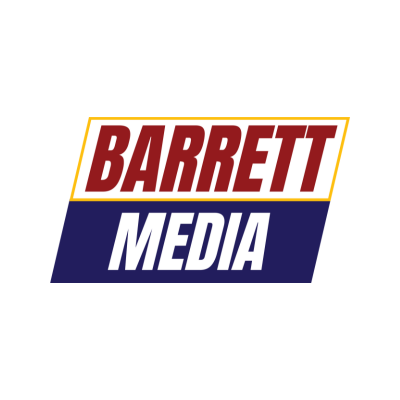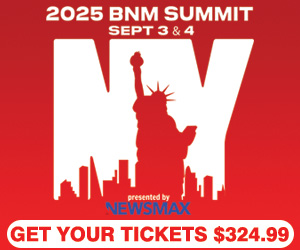As ESPN prepares to launch its direct-to-consumer product no later than 2025, there have been questions pertaining to its presentation within the overall company environment and how it will tie into its other offerings. The Walt Disney Company, which has 80% ownership in ESPN, recently agreed with FOX Corporation and Warner Bros. Discovery to enter into a joint streaming venture that will combine channels from all three companies to create a direct-to-consumer offering. Nonetheless, ESPN is going ahead with its Flagship direct-to-consumer product, discussions that ESPN Chairman Jimmy Pitaro remembers were taking place in early 2018.
At the time, Pitaro was leading the consumer products and interactive division at The Walt Disney Company and remembers discussions about the future of the dissemination of the ESPN brand. The company introduced ESPN+ in April 2018 as a niche offering, but the leadership knew that it was just the start. From that time, the intent was about expanding the accessibility of its primary channels to a direct-to-consumer platform. Once Flagship is officially introduced, it will encompass the ESPN channel, along with ESPN2, ESPNEWS, college channels and ESPN+.
“We have not yet decided what ESPN+ will look like in a world where we take our flagship channels and make them direct-to-consumer. That is a work in progress,” Pitaro said in an interview with Alex Sherman of CNBC. “Regardless when we do make our channels available direct-to-consumer – our primary channels – whatever ESPN+ is in that environment will be made available to the customer that subscribes to Flagship.”
Pitaro acknowledged that innovation has set ESPN apart from its competition for many years and credited his predecessors and the company’s employees. When Flagship becomes available en masse, Pitaro aspires for there to be evident product enhancements within the experience, including interactive elements such as customization and personalization. He stated that ESPN will lean more into that area as it builds a product within its ESPN app interface.
“When I fire up the ESPN app and if I’m a subscriber to ESPN Flagship direct-to-consumer, then it shouldn’t just be about the guide,” Pitaro said. “It should be about recommendations, and we’re doing a lot of this today, but you can imagine a lot more in terms of recommendation, customization. So there’s personalization where the algorithms kick in, but more customization opportunity for me to let ESPN – as a sports fan – let ESPN know what my interests are in terms of sports, in terms of teams, in terms of players.”
Despite the forthcoming launch of Flagship, ESPN will still keep its linear channels as part of the traditional television bundle. Data from S&P Global Market Audience referenced in the CNBC documentary outlines that ESPN charges $9.42 to cable providers for every one of its subscribers. The Walt Disney Company’s most recent earnings report outlines that ESPN earned $4.07 billion in revenue during the first quarter of fiscal year 2024, equating to $255 million in operating income.
From 2013 to 2023, about 40 million households canceled traditional cable service, according to eMarketer and Insider Intelligence. This has ostensibly presented a quandary for ESPN, with approximately 62% of its revenue in fiscal year 2023 emanating from cable subscription fees. Pitaro expressed that the team at ESPN has been disciplined in a variety of areas such as rights acquisitions, which has negotiated several deals over the last few years.
“We can’t have everything and we know that, and so we’ve been very careful in terms of what deals we renewed and which deals we decided to walk away from,” Pitaro said. “We’ve been very careful in terms of the investments in general that we’ve made.”
ESPN is prioritizing digital media and is in the midst of evaluating potential strategic partners to help catalyze and hasten the adoption of the Flagship direct-to-consumer offering. Pitaro explained that he and The Walt Disney Company Chief Executive Officer Bob Iger met to discuss this point and reached a conclusion that there are partners out there. At the moment, the company considers potential partners through the lens of technology, marketing and content as the big ones with whom they are speaking. It has been reported that these brands could acquire an equity stake in ESPN as part of the deal, which LightShed Partners and Bank of America estimate to have a valuation between $20 billion and $30 billion.
“For us, it’s not about equity; it’s not about these partners taking an ownership interest in ESPN,” Pitaro explained. “That is something, as Bob has said, that we are very much open to. This is about partnership and accelerating the launch or the adoption of the ESPN Flagship.”
When The Walt Disney Company launched Disney+, it partnered with Verizon in a distribution deal. Pitaro feels the deal was beneficial for Verizon because it attracted new subscribers to its portfolio, along with hypothesizing that it reduced overall churn. As ESPN continues to penetrate into the digital age, it is working to appeal to younger consumers through its audience expansion initiative. That is part of the rationale of licensing The Pat McAfee Show in a multi-year deal in addition to employing professionals who solely focus on the brand’s social media presence.
Digital encompasses part of the value proposition ESPN brings to its rights negotiations amid an era where other technology and commerce brands, such as Apple, Google and Amazon, are bidding and/or considering larger investments into live sports rights. Pitaro believes that as a business within The Walt Disney Company, it can leverage the breadth of its portfolio to provide strong propositions to sports leagues in addition to its production abilities.
“We’ve been at this for 44 years,” Pitaro said. “It is not easy to produce events; live events at scale, and we do it incredibly well. A lot of our competition does as well, but when you add all this; when you piece it together, the power of our brand and what the ESPN brand stands for in terms of trust and credibility, I will tell you without any hesitation that we’ve always had competition. We have more competition today than we’ve ever had, but I do really like our hand.”




